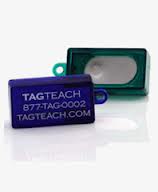 Did you start hearing a lot about ABA when you first got started with your child?
Did you start hearing a lot about ABA when you first got started with your child?
Did you think, “What on earth is ABA and why is everybody talking about it?”
If you’ve ever wondered what’s the big deal with ABA, here are some facts.
ABA stands for Applied Behavior Analysis.
ABA is widely acknowledged to be the most effective way to teach skills and manage behaviors in children with autism.
Why? It is based on decades of scientific experiment and verification.
ABA is a science
Applied Behavior Analysis is a science, just like biology, chemistry or physics. Scientists in this field use the scientific method to explore questions about behavior and learning. Remember the scientific method from high school science classes? Here are steps:
- observation of phenomena
- development of a hypothesis explaining these phenomena
- experiments to test the hypothesis
- collection of data from the experiments
- analysis of data
- development of a conclusion.
This process is replicated to refine and validate the results. When the process is completed, if the results meet certain criteria (the results are stable, they last over time, they can be replicated), the scientific method results in the discovery of new scientific “laws.”
The good thing about these “laws” is that we know they are valid. They are real. And they work.
ABA applies scientific laws to teaching
After all this research, applied behavior analysts had a new set of tools to address real-life situations, such as teaching, behavior management, and working with people with disabilities. What are these tools? They include:
- positive reinforcement
- reinforcement schedules
- shaping
- cues
- signals
- prompting
- fading
- behavior chains
Scientific laws resulted in scientific teaching and behavior methods
This body of scientific laws evolved into the well-known autism therapies of Applied Behavior Analysis (ABA) and Verbal Behavior Therapy (VB). It is also the origin of scientifically-based academic approaches such as the highly effective Direct Instruction programs and Precision Teaching protocols. Last, but not least, we now have the addition of the event marker, the tag, of Teaching with Acoustical Guidance (TAGteach).
ABA is scientific, effective and mindful of the child
As autism parents, we want to be sure that our children are receiving the right treatment. With ABA, you know that there are decades of experimental and applied research supporting these practices.
We want to see our children make progress. With ABA, the focus is on building up the child’s skill levels, using data collected during sessions to monitor progress, making changes as necessary, and increasing each child’s range of abilities.
We want to see our children kindly treated. With ABA, learning is achieved through positive reinforcement of the desired behavior, so we know our children will be supported and encouraged.
Scientific, effective, mindful of the child.
These are the reasons ABA is important to autism families. These are the same reasons TAGteach is so effective for increasing skills.
What is TAGteach?
TAGteach stands for Teaching with Acoustical Guidance. TAGteach is a teaching and communication method based on the scientific principles of Applied Behavior Analysis (ABA).
TAGteach enables extremely precise positive reinforcement of behavior by using an acoustical signal to “mark” the behavior – at the precise moment the child performs the behavior! The acoustical signal is a short, sharp sound made by a handheld device (the “tagger”). When the child performs the correct action, the parent/instructor immediately presses the button on the tagger and hands over a treat (candy, treat, token, praise, social recognition, or money) as a reinforcer.
With TAGteach, it is easy to reinforce behaviors precisely and quickly. The immediate, accurate feedback and positive reinforcement result in the child performing the correct action more often, and for longer periods of time. With immediate feedback and learning tasks broken down into small steps, children (and adults) can learn many new skills with TAGteach — at their own pace.
For more information visit the TAGteach website.
Join the free TAGteach Yahoo Group.
TAGteach taggers are available here.
See Martha’s book about TAGteach for Autism or feel free to ask me a question (with no obligation).
Sign up for my mailing list to receive updates, new articles and free tips right in your inbox!
If you liked this post, please share it. Thank you!


Comments are closed.